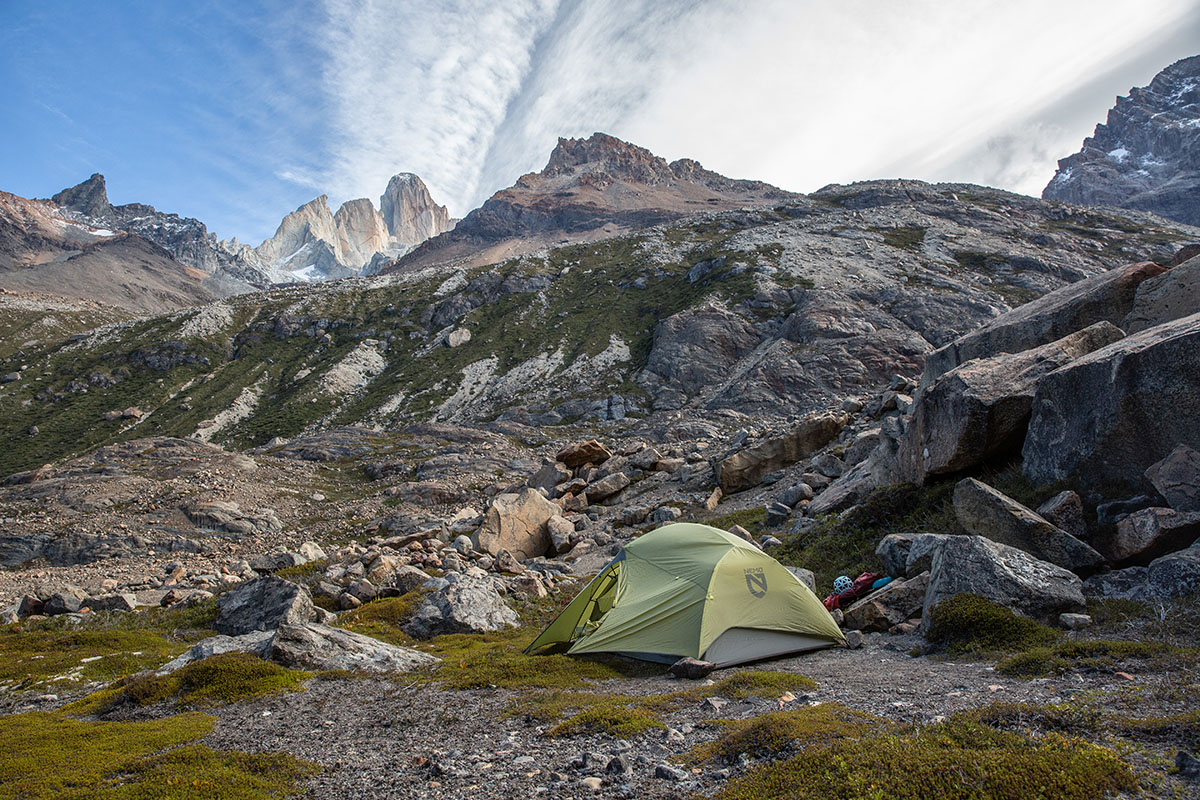
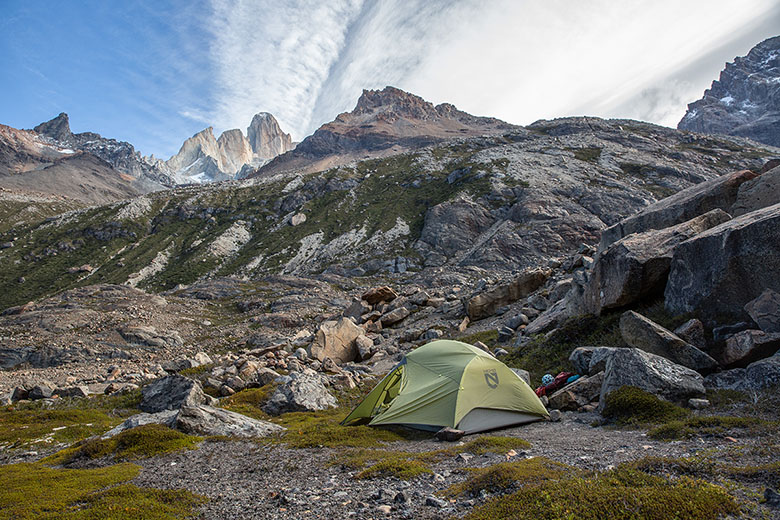
Price: $530
Packaged weight: 4 lbs. 2 oz.
Floor area: 31.3 sq. ft.
Capacities: 2P, 3P
What we like: Impressive livability with high-end and sustainable materials used throughout.
What we don’t: Not a class leader in weight or ventilation.
See the Nemo Dagger Osmo 2P
Nemo’s Dagger has long been considered one of the most livable lightweight backpacking tents on the market, and the latest Osmo version offers a similarly competitive mix of weight and roominess. We brought the two-person model to Patagonia for testing, where it held its ground impressively well in violently strong winds and rocky terrain. It’s not the lightest option available at just over 4 pounds all in, nor is it a class leader in weather protection and ventilation. But all of the updates were well executed, and the Dagger remains one of the most comfortable and well-equipped options for two backpackers. Below we outline our experiences with the Dagger Osmo 2P. To see how it stacks up to the competition, see our article on the best backpacking tents.
For years, the Nemo Dagger has been considered the gold standard for weight and livability. However, with several recent updates in the backpacking tent market, the latest Osmo 2P model is no longer that much of a standout at 4 pounds 2 ounces all in (4 oz. heavier than the prior version). Among top backpacking models, MSR’s popular Hubba Hubba now undercuts the Dagger considerably at 3 pounds 4 ounces, while the more expensive and less durable Big Agnes Copper Spur HV UL2 shaves off a little more at 3 pounds 2 ounces. You can save even more weight with the Big Agnes Fly Creek HV UL2 (2 lb. 4 oz.) or Nemo’s own Hornet Osmo 2P (2 lb. 8 oz.), but the Dagger is much roomier for two backpackers, and we think those models are best for solo trips. All in all, the Dagger Osmo clearly isn’t a featherweight, but it’s not a burden to carry and offers more livable space than most of the options mentioned above (more on this below).
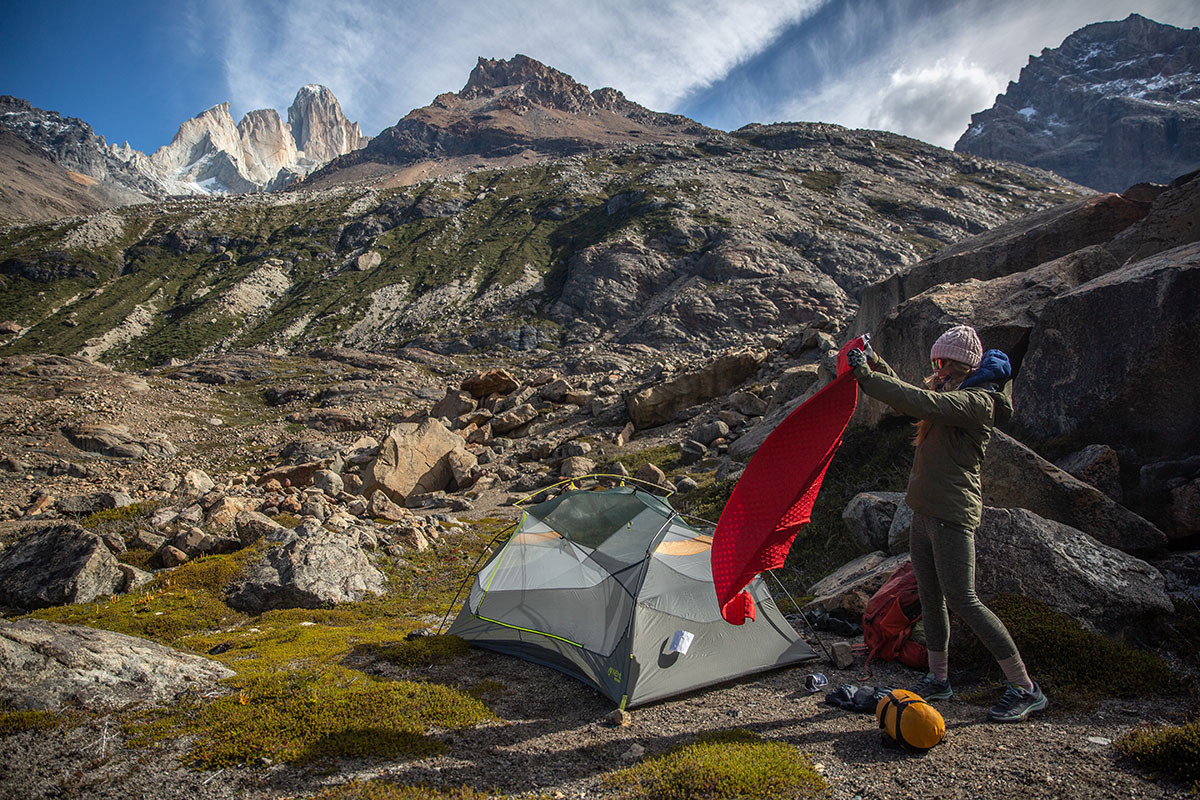
At 6.5 x 19.5 inches, the Dagger Osmo's packed size is the same as the prior version and lands a little above average for the price and features. On our trip to Patagonia, the Dagger was bulkier than our MSR Hubba Hubba (19 x 4.5 in.) and ultralight FreeLite 2 (18 x 4.5 in.), but we had no issues fitting it in a backpacking pack even without separating the poles from the main storage sack. Thick fabrics and bulky hub systems can increase packed size, but Nemo has done a pretty good job keeping things light and compact. If you do remove the tent poles, the Dagger’s roll-top stuff sack can be compressed to two-thirds its normal length and secured via a buckle closure.
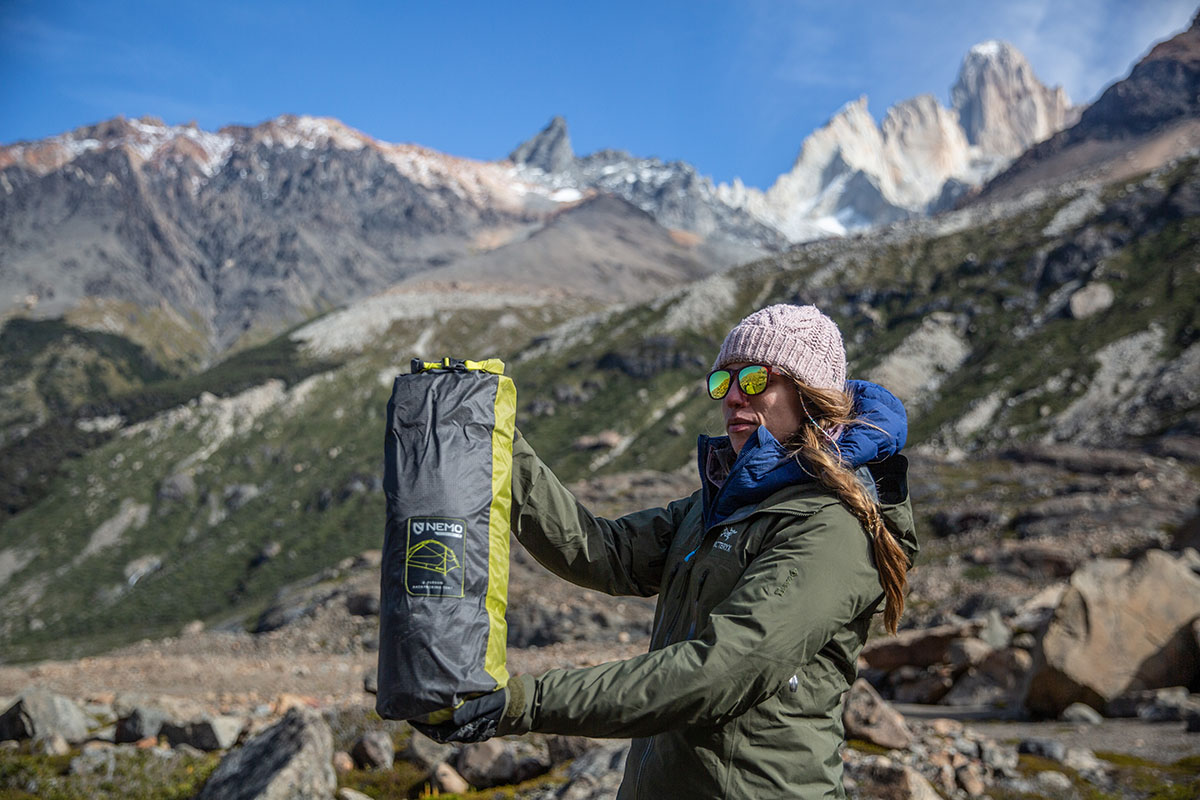
Past versions of the Dagger stood out for their generous interior space, and the latest Osmo 2P model carries the torch with identical overall dimensions. All too often, one or both of our sleeping pads make their way up the sidewalls of a so-called two-person model, but not here. Two regular-width sleeping mats fit side-by-side with room to spare, the symmetrical floor is expansive enough to accommodate a long sleeping bag, and the sidewalls are stretched to be nearly vertical. And while the tent peaks at 42 inches tall right in the center, the dual hubs and bent poles at each end of the tent create an openness that makes it easy to sit upright almost anywhere without hitting the ceiling. The net result is a truly comfortable place for two backpackers to sleep at night.
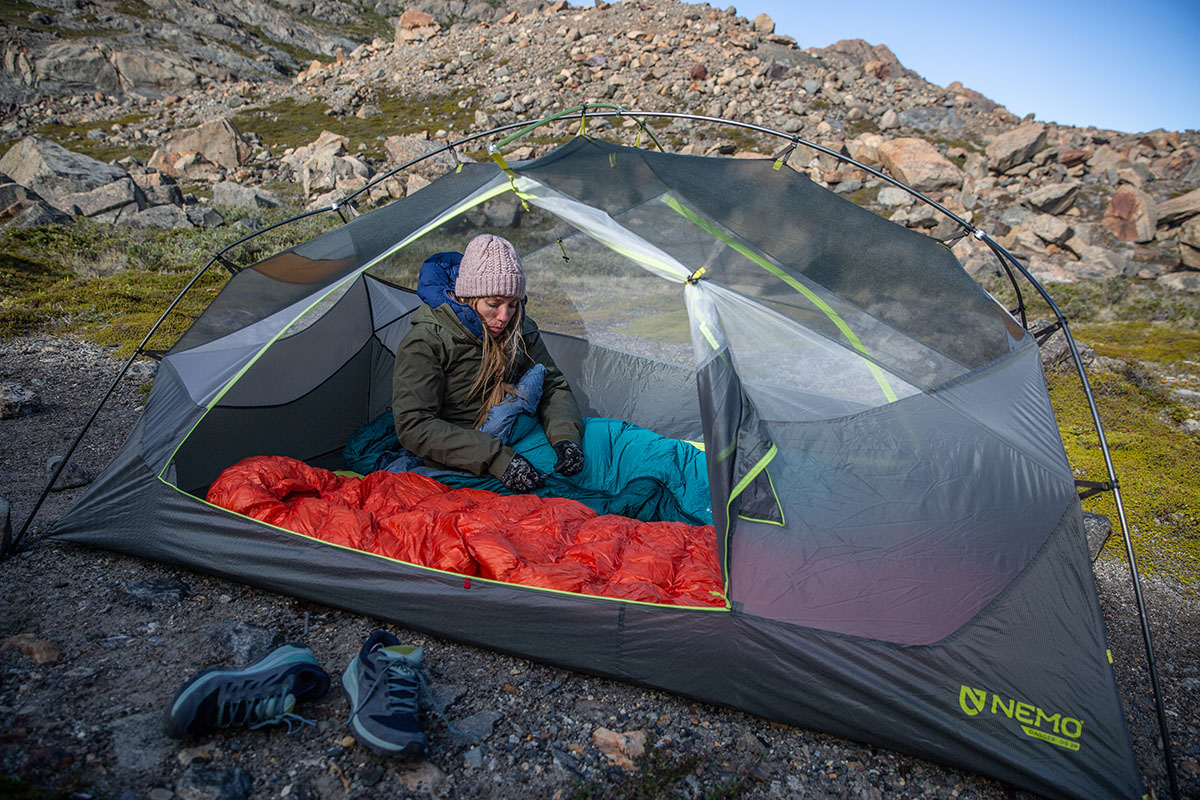
For comparison, we’ve also tested Nemo’s ultralight Hornet and Dragonfly, which weigh considerably less but have heavily tapered designs. The walls of those tents have more of an inward slope, and both the Hornet and Dragonfly can just barely fit two regular-width pads side-by-side. This type of design is fine for solo use or for two people in a pinch who really want some of the lightest setups available—and don’t mind being in close quarters—but they’re almost bivy sack-like in nature. In most circumstances, we prefer the Dagger Osmo.
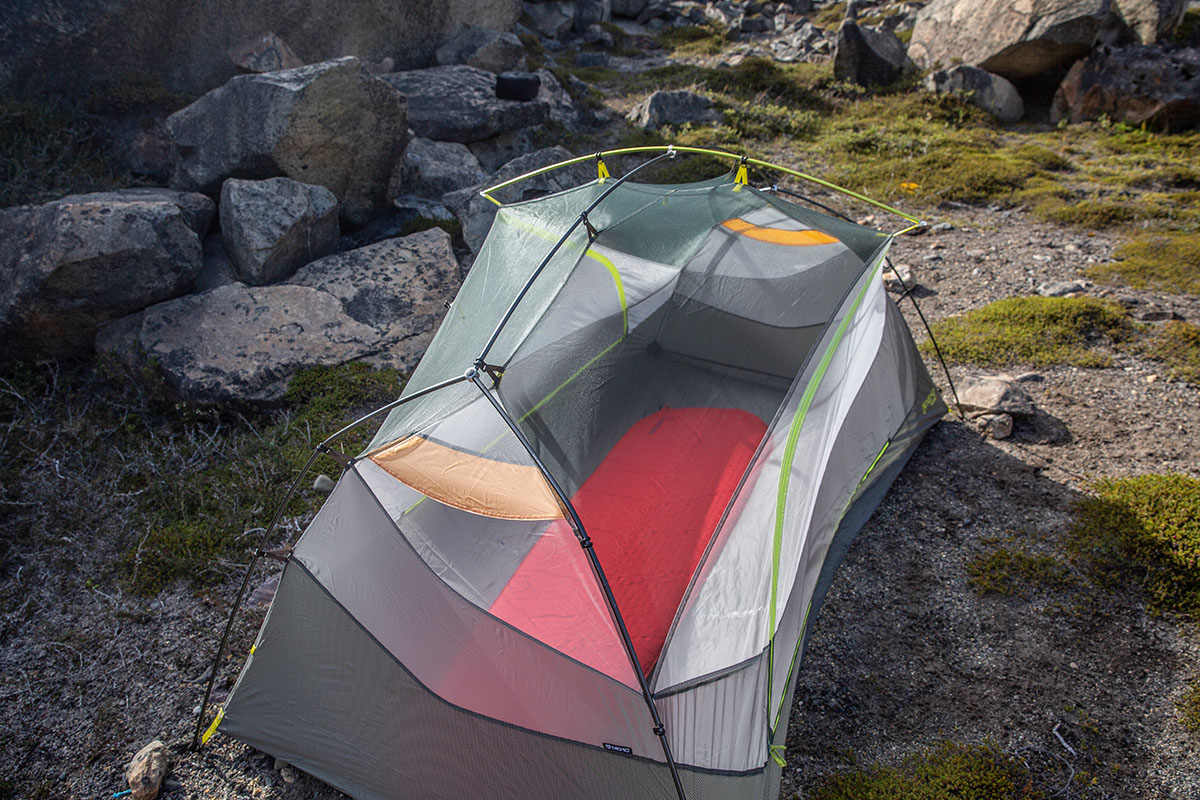
In addition to interior space, durability often is compromised as tent manufacturers look to trim ounces. Thankfully, Nemo didn’t go overboard with the Dagger Osmo, hitting a nice mix of moderately thin fabrics that are resistant to tears and abrasion. The big news with the latest model is the use of the namesake Osmo fabric, which is comprised of a polyester-nylon ripstop material that’s intended to boost water resistance, stretch less when wet, and eliminate the use of harmful chemicals and perfluorocarbons. It’s difficult to assign an accurate denier (D) rating since the fabric uses two types of yarns, but I found that the Dagger Osmo felt similarly hardwearing to the past-generation model, which utilized 30D nylon along the bottom with thinner 15D along the canopy and fly. For comparison, the latest MSR Hubba Hubba has a 20D floor, while the Big Agnes Copper Spur HV’s is 15 x 20D.
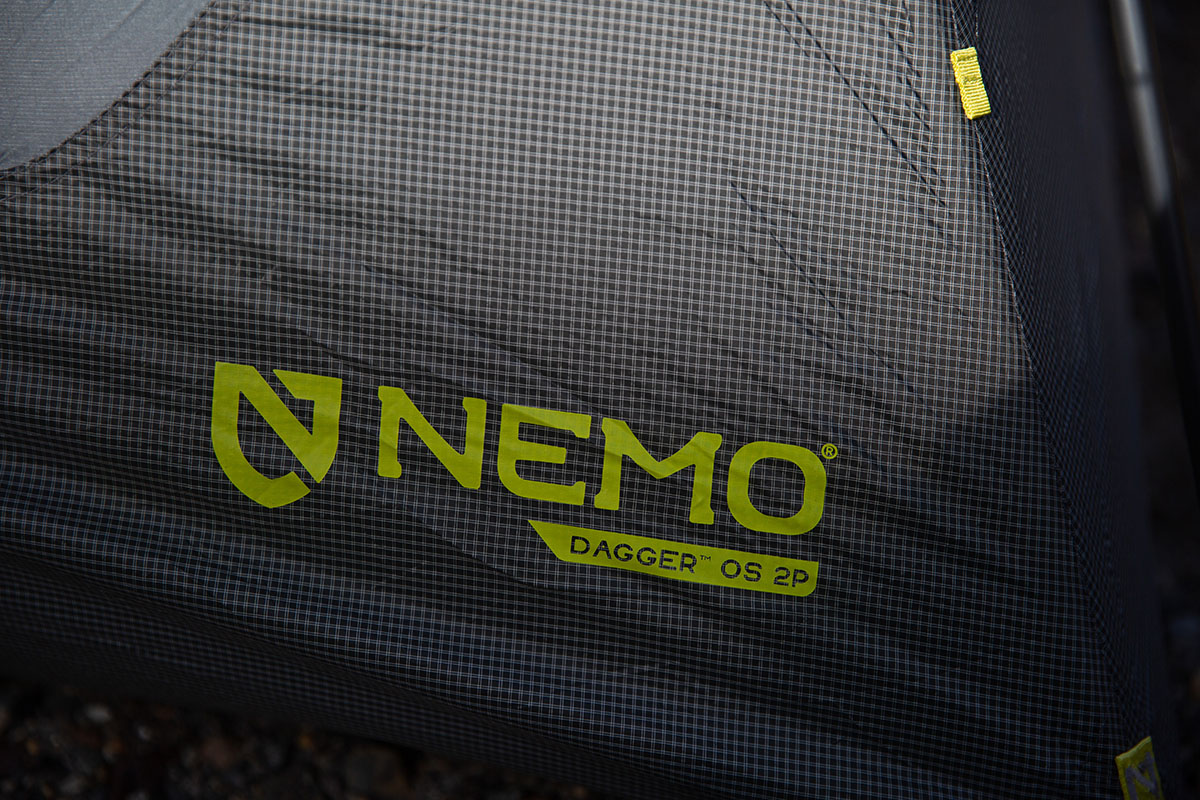
We camped on pretty rough surfaces in Patagonia, including one night at a very exposed and rocky campsite at Lago Eléctrico. Due to the high winds, I set up camp quickly without having time to carve out a flat and rock-free spot, but even without using a footprint, the Dagger Osmo came away without any scuffs or rips. The only durability issue I encountered was a minor (and almost imperceptible) snag along the stuff sack. But to be fair, it was fully exposed on the outside of my backpacking pack, and the tent itself is holding up incredibly well with no signs of wear.
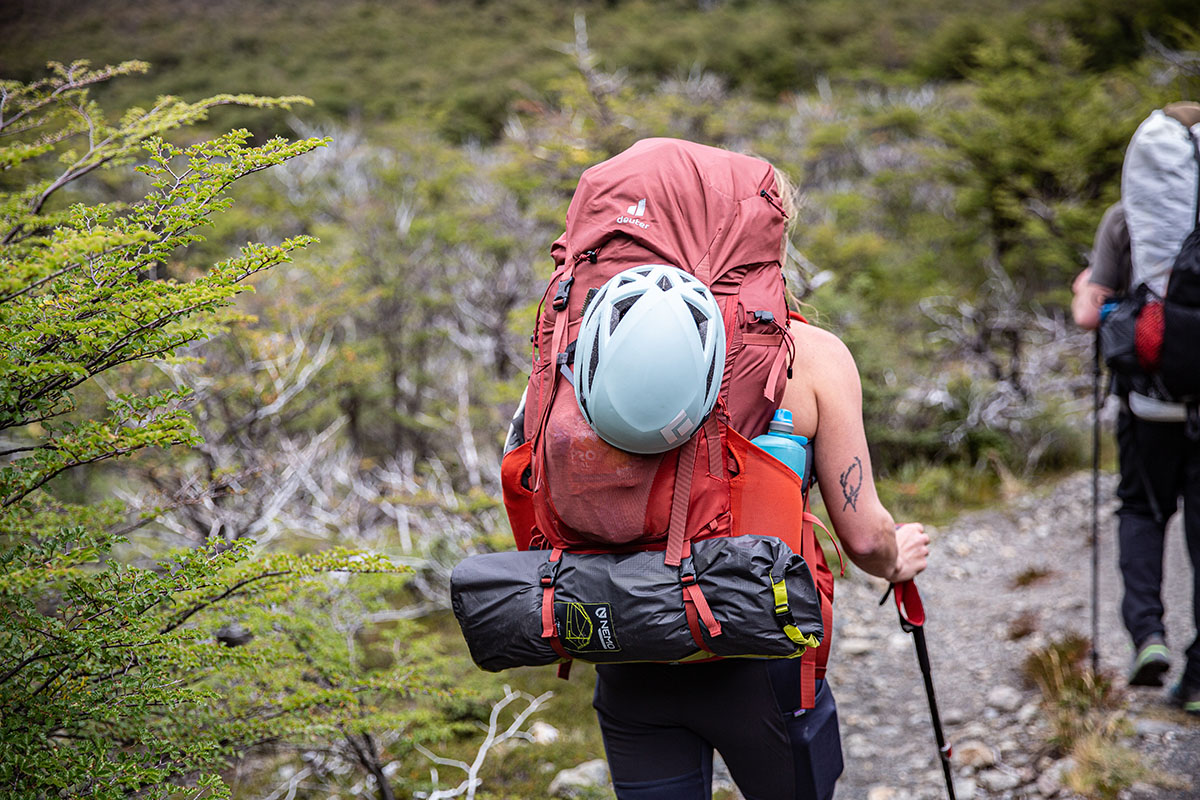
The Nemo Dagger Osmo’s sturdy structure, water-repellent materials, and tall bathtub floor add up to a formidable three-season tent. As I touched on above, the Osmo fabric is designed to be inherently resistant to moisture and stretching when wet, and it’s done just that. Two areas I was worried about were the raised ends of the rainfly, which arc aggressively upwards between the corners and leave a section of single-wall fabric to fend off driving rain. But these concerns were mostly unfounded: The single-wall panels truly are waterproof, and I have yet to experience any leaking. Even in sustained rain while backpacking along the Huemul Circuit, the interior remained dry and moisture-free (although the wind was uncharacteristically calm, which certainly helped). And a final note: Nemo includes a Landing Zone with the tent, which is a small panel of waterproof fabric that can be laid down in the vestibule to protect your gear from the elements. I didn’t end up needing to use this feature, but it’s certainly nice to have on truly inclement days.
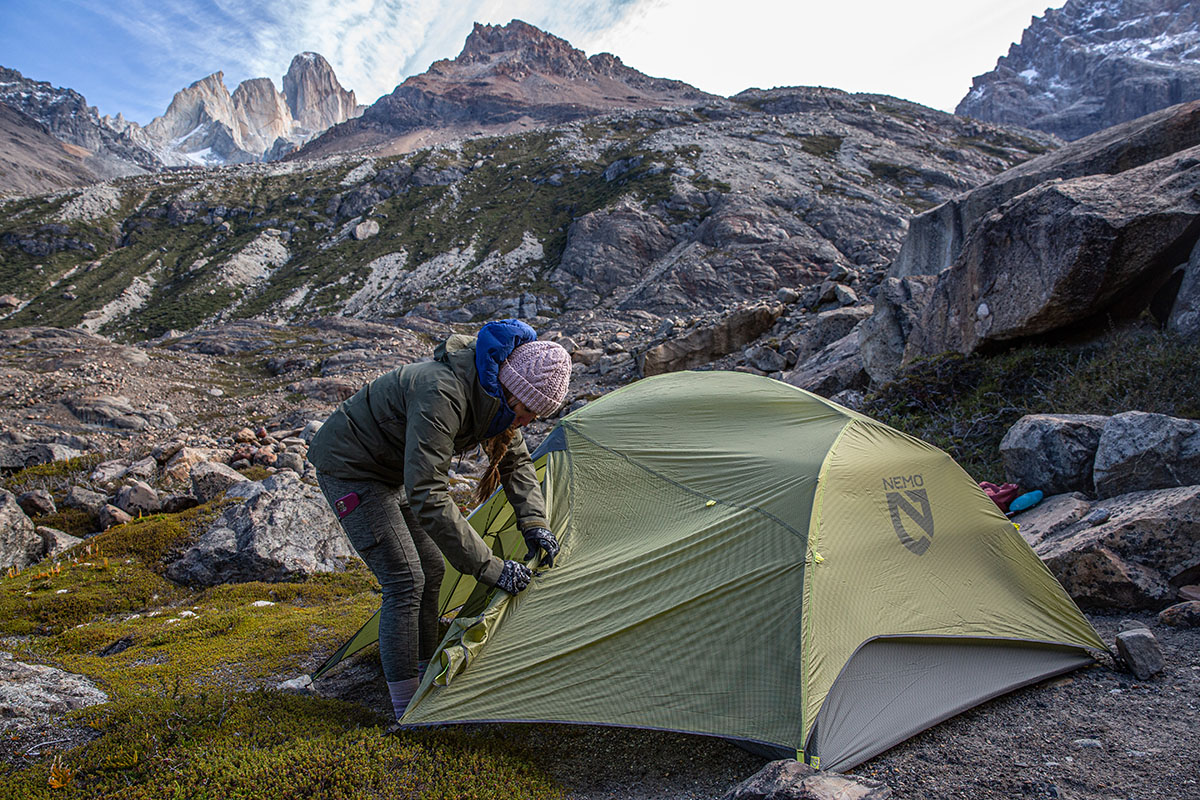
Wind resistance is another clear highlight of the design. We were pummeled with strong, knock-you-over gusts in Patagonia’s Río Eléctrico Valley that ripped through camp throughout the night, but the Nemo remained upright and held strong in the violent winds. The poles worked exactly as intended, flexing and bowing to combat the gusts without coming loose or snapping under pressure. To be fair, all of the tents we had with us weathered the night without issue—including MSR’s much lighter FreeLite 2. That said, our FreeLite tester noted that he woke up on multiple occasions to brace for impact when he heard the wind building, while I was able to sleep soundly through the night with zero concerns about the Dagger.
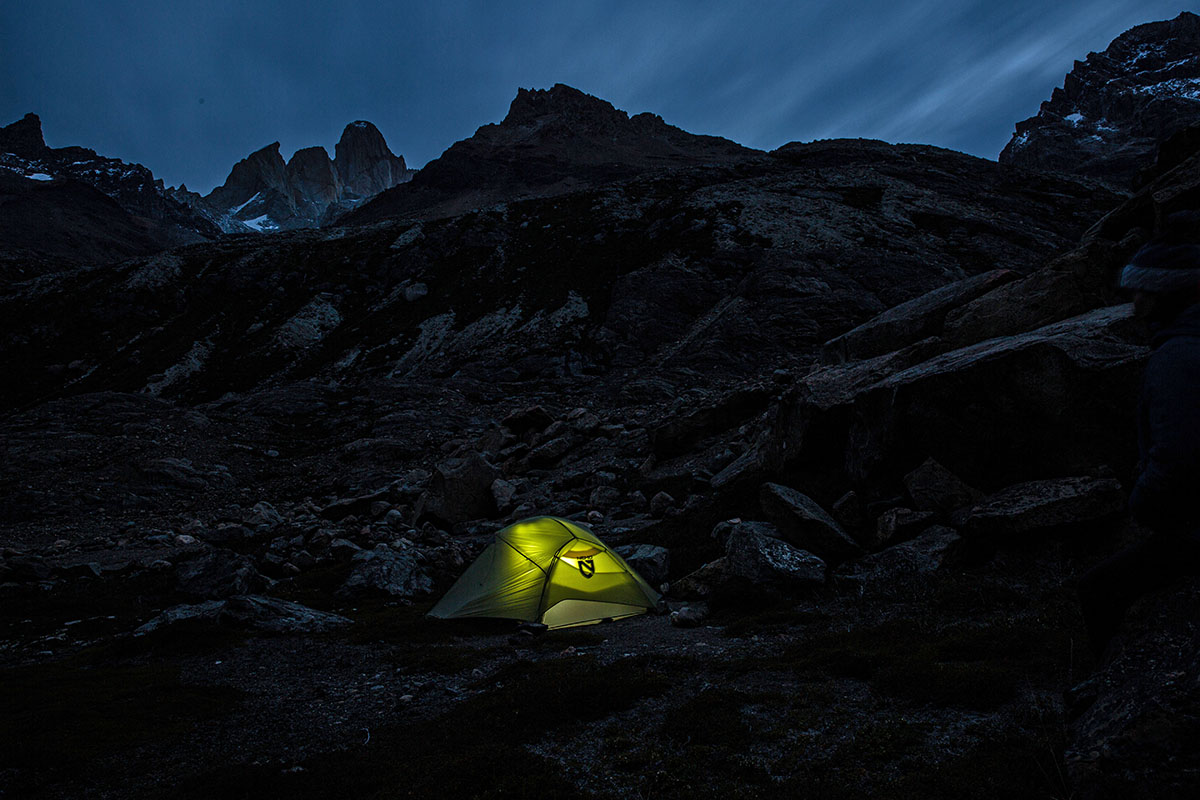
The Dagger Osmo's double-wall build and generous amount of mesh make it reasonably comfortable even on warm summer nights. That being said, the rainfly ventilation system isn’t our favorite and did result in some slight clamminess in damp and humid conditions along the Huemul Circuit. Unlike typical backpacking tent designs that have a deployable vent at the roof or sides, the Dagger has vents at the very top of the zippered portion of each vestibule door. The upside is that you can manage the system without leaving the tent, but by deploying the vent, you trim away the upper few inches of the door, making it a little more difficult to get in and out. All things considered, it’s a small nitpick—and the system is completely functional—but the design does fall a little short in this regard.
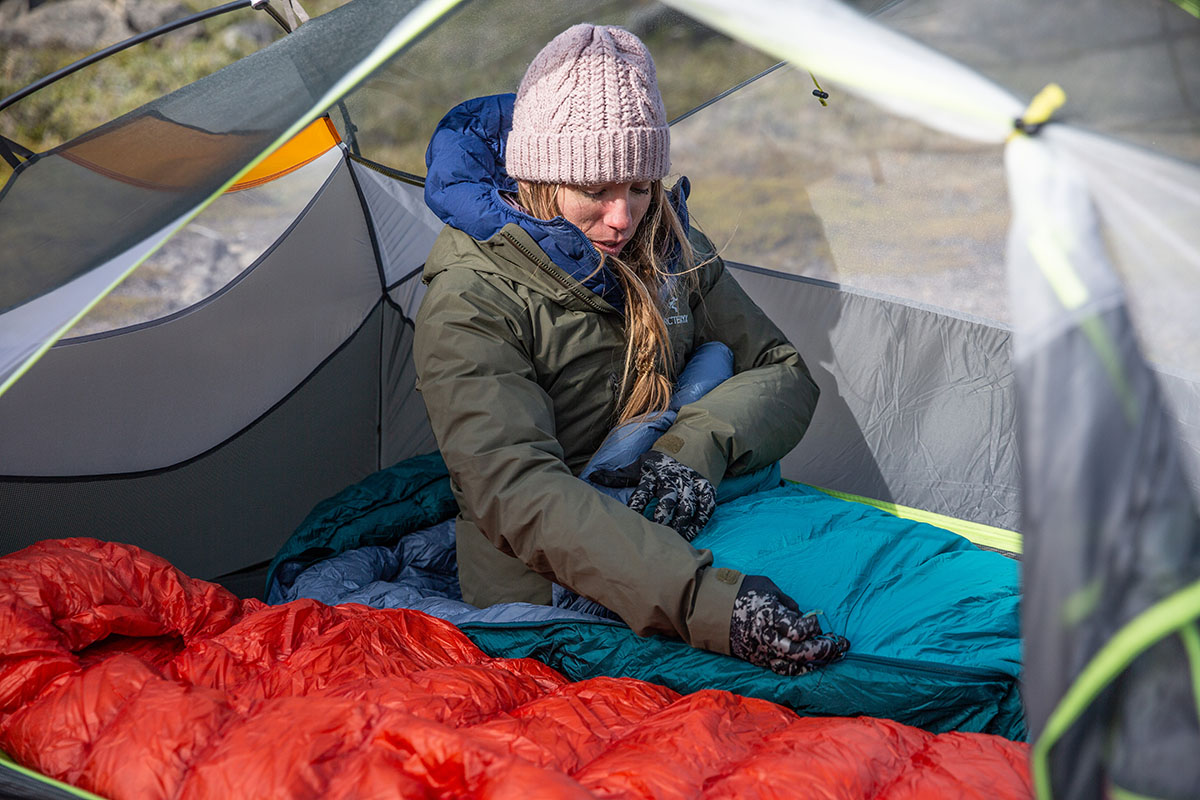
As with Nemo’s Hornet and Dragonfly tents, the Dagger Osmo has two doors and two vestibules. For a couple of backpackers, this is far more convenient than a single door and vestibule—no crawling over your tent mate in the middle of the night to go the bathroom. But unlike the ultralight Hornet, the Dagger’s trapezoidal vestibules are massive. You can easily lay a backpacking pack inside the fully protected space without it leaning up against either the rainfly or the tent body. The 22.8-square-foot space handily beats the Hubba Hubba (15 sq. ft.), Copper Spur HV (18 sq. ft.), and even the spacious vestibules on the REI Half Dome SL 2+ (22.5 sq. ft.). Nemo also boosted storage on the inside of the latest model, including two lower mesh pockets, one upper mesh pocket at each end, and two Nightlight Pockets that can be used for storage or diffused illumination from your headlamp. In the end, I had no trouble finding room to stash all of the essentials, including my phone, maps, and other necessities.
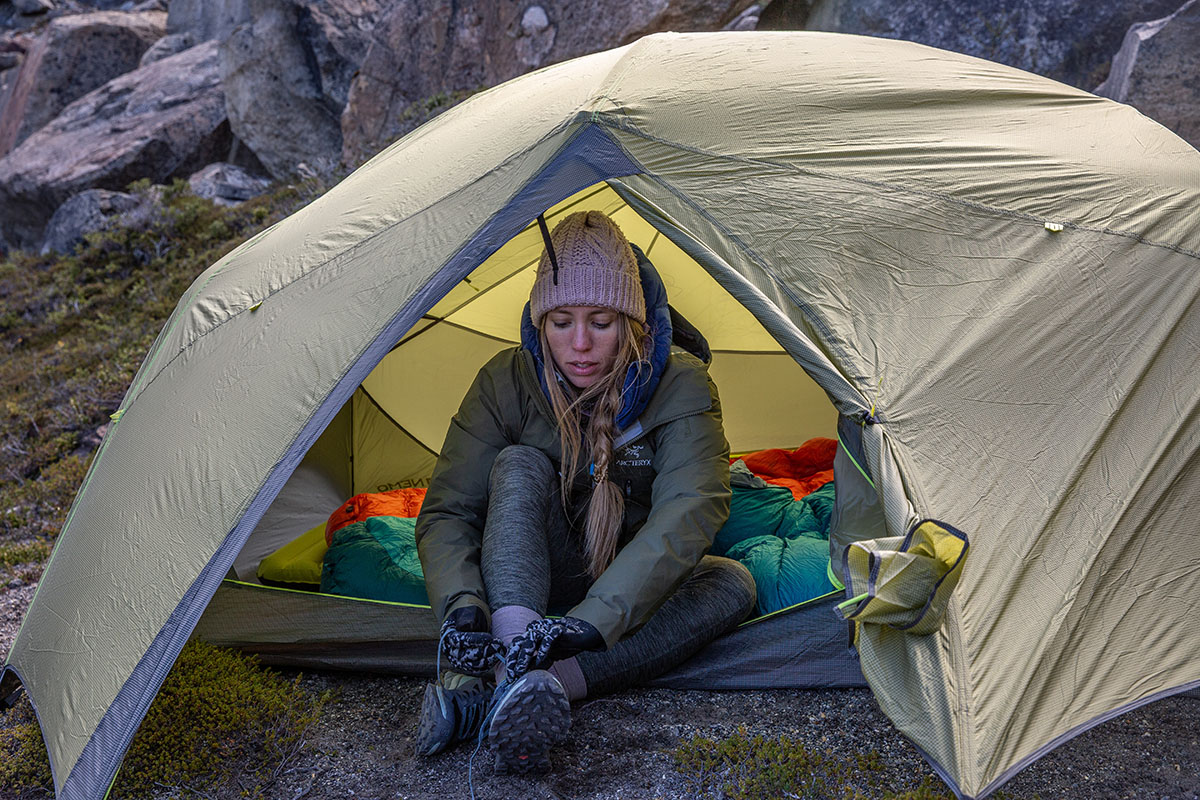
The Dagger Osmo's fully freestanding build and symmetrical shape is a cinch to set up. It’s just a matter of staking out the corners, attaching the hubbed poles to create the structure (and matching the color-coded poles to the webbing of the same color), and connecting the rainfly. From start to finish, it’s a few short minutes for one person to accomplish, which is comparable to most mainstream backpacking tent models. The freestanding design also makes it really easy to get a taut pitch even on a granite slab—significantly easier than a tent like the semi-freestanding Big Agnes Tiger Wall. Taking down the Dagger is a matter of reversing the process and is just as simple.
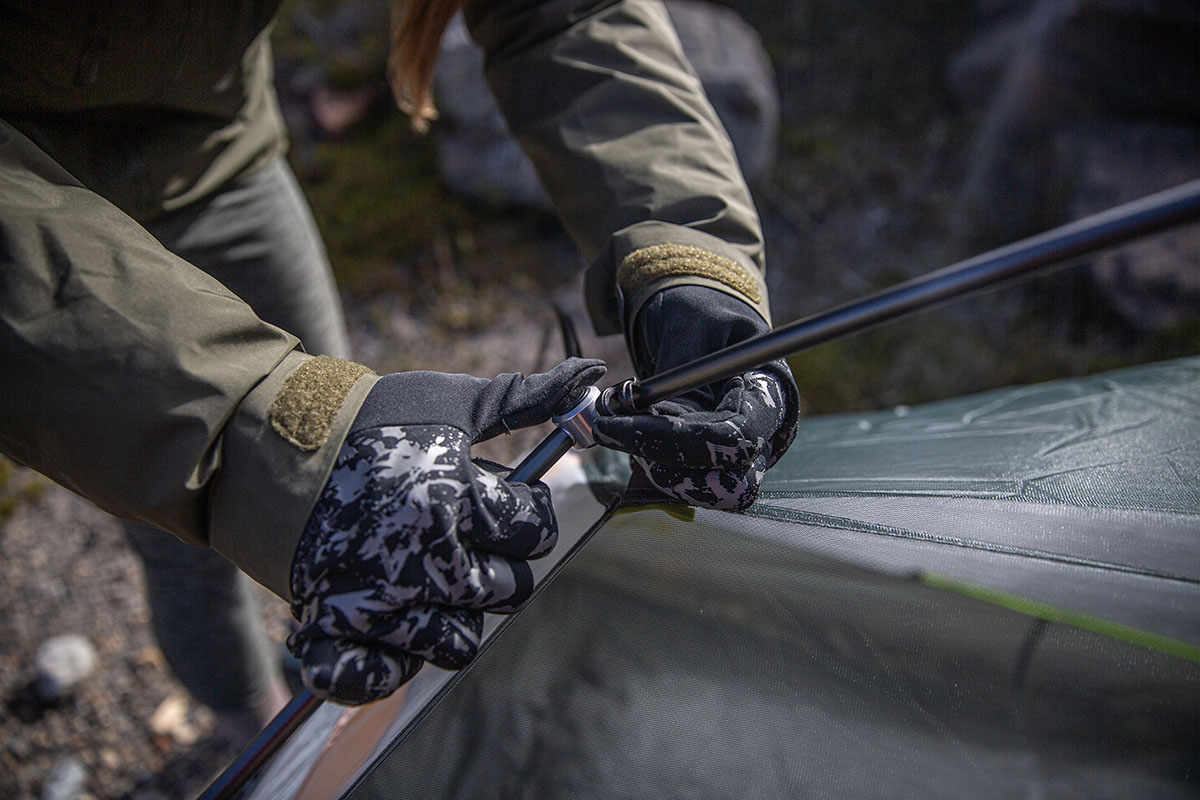
Nemo’s latest iteration of the Dagger comes with a host of eco-friendly upgrades from past generations. Specifically, the Osmo fabric is woven from 100% recycled yarns and is both PFC- and PFAS-free, which means it forgoes the use of harmful perfluorocarbons and meets fire-retardant standards without added chemicals. The Repreve pole bag is also 100% recycled. Taken together, we commend Nemo for the sustainability effort and applaud them for integrating more environmentally friendly materials into the collection.
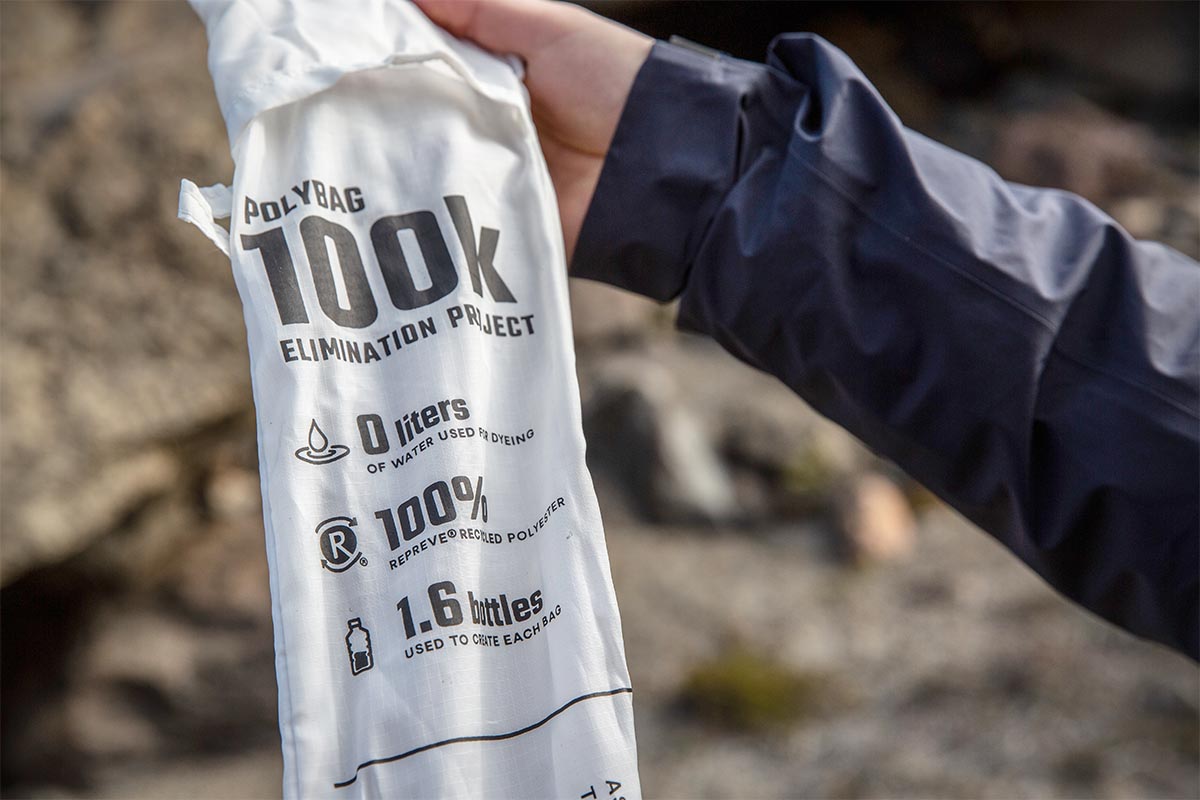
For this review, we tested the two-person Dagger Osmo, and Nemo also offers a three-person model. The design remains largely the same, although the floor expands 20 inches to fit another pad, and weight and price go up by 8 ounces and $70, respectively. In some cases, we recommend sizing up to make the interior more livable—such as purchasing the Nemo Hornet 2P for one backpacker—but the Dagger’s accommodating shape means that we’d only select the 3P if we were planning to add a third person. As we’ve found, the 2P is completely fine for two adults and a medium-sized dog.
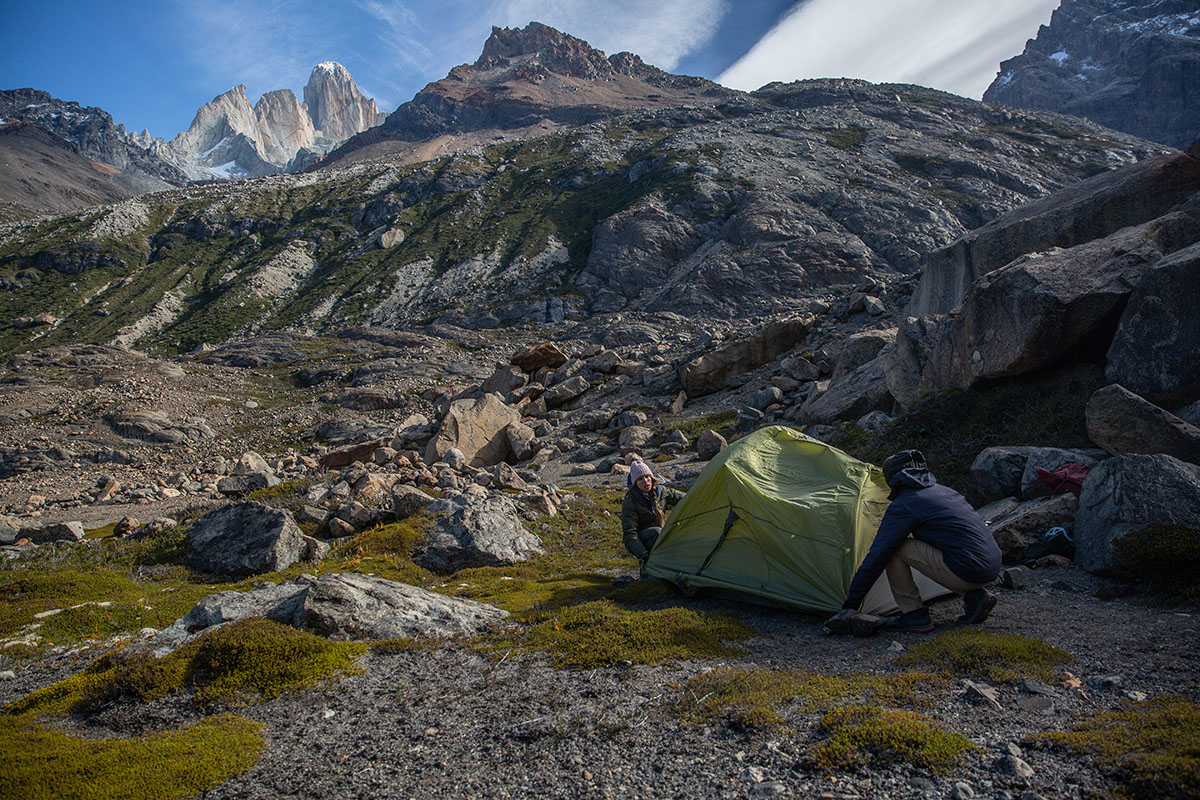
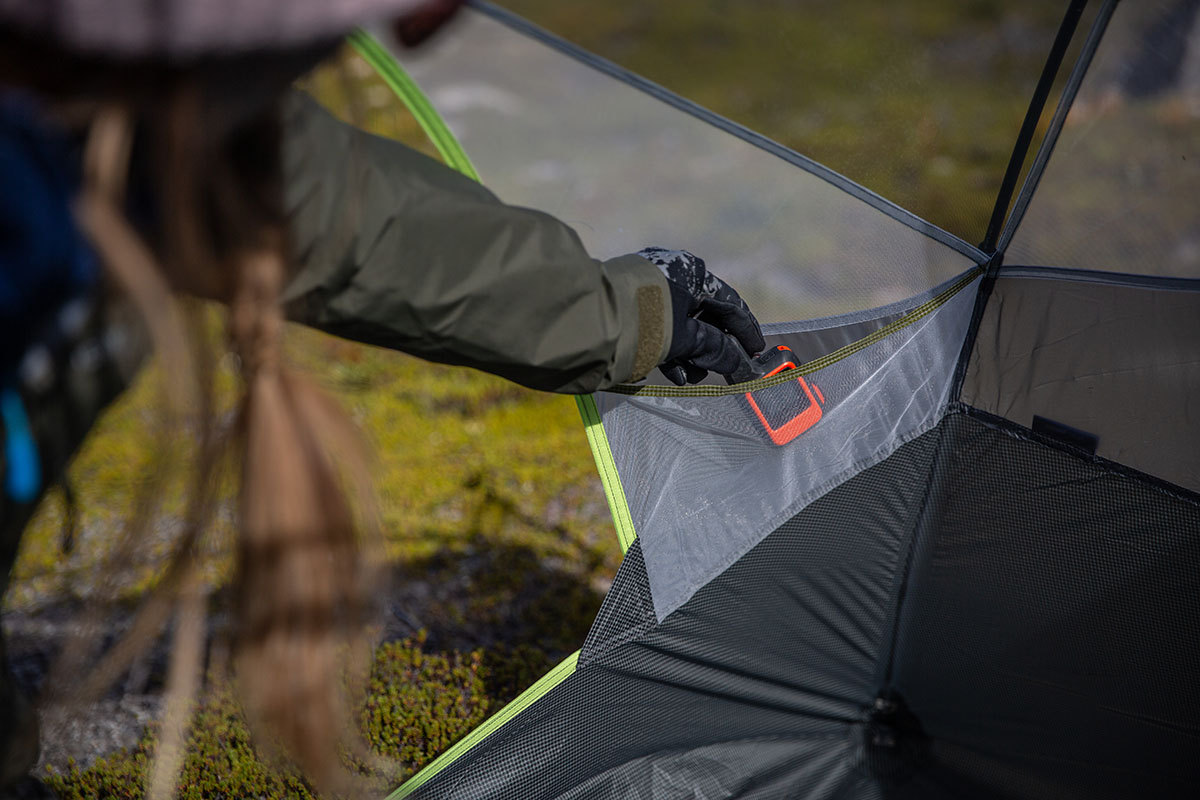
| Tent | Price | Weight | Floor | Area | Height | Door(s) | Capacities |
|---|---|---|---|---|---|---|---|
| Nemo Dagger Osmo 2P | $530 | 4 lb. 2 oz. | Unavail. | 31.3 sq. ft. | 42 in. | 2 | 2P, 3P |
| MSR Hubba Hubba 2 | $550 | 3 lb. 4 oz. | 20D | 29 sq. ft. | 40 in. | 2 | 1P, 2P, 3P |
| Nemo Dragonfly Osmo 2P | $500 | 3 lb. 2 oz. | 0D | 29 sq. ft. | 41 in. | 2 | 1P, 2P, 3P |
| Big Agnes Fly Creek HV UL2 | $400 | 2 lb. 4 oz. | 20D | 28 sq. ft. | 42 in. | 1 | 1P, 2P |
| Nemo Hornet Osmo 2P | $430 | 2 lb. 8 oz. | 0D | 27.5 sq. ft. | 39 in. | 2 | 1P, 2P, 3P |
| Big Agnes Copper Spur HV UL2 | $550 | 3 lb. 2 oz. | 15x20D | 29 sq. ft. | 40 in. | 2 | 1P, 2P, 3P, 4P |
The Nemo Dagger Osmo's premium construction and $530 price pit it against some of the best sellers in the backpacking tent market. Another one of our favorites that’s also been recently updated is MSR’s Hubba Hubba 2. The MSR shares a similar blueprint as the Dagger: lightweight but reasonably tough fabrics, a high level of comfort, and a user-friendly, freestanding design. The Dagger gets the edge in interior space with a longer footprint that’s better for tall backpackers—although we consider both pretty comfortable for their weight—and it has larger vestibules. But the Hubba Hubba is now significantly lighter, its Easton poles are a little sturdier, its rainfly has better coverage at the head and foot ends of the tent, and its rainfly vents are less obtrusive. In the end, they’re both great all-around tents, and a final decision will likely come down to preferences on livability (the Dagger wins out) versus weight and protection (the MSR gets the edge).
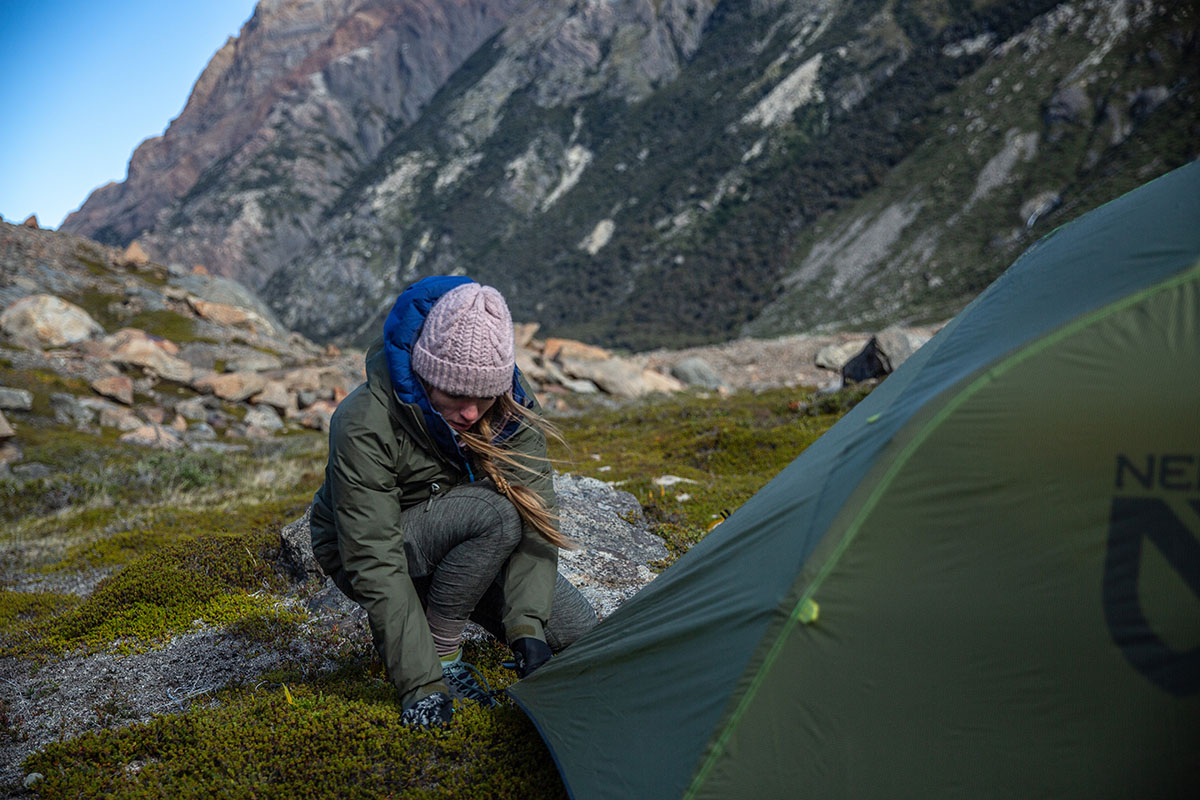
Another Nemo design to consider is their Dragonfly Osmo 2P. One of the biggest benefits is weight: At 3 pounds 2 ounces all in (a full pound lighter than the Dagger Osmo), the Dragonfly manages to retain good overall livability with two doors and vestibules, 29 square feet of floor area, and a generous 41-inch peak height. However, the Dragonfly tapers at the feet (compared to the Dagger’s symmetrical layout) and is noticeably more cramped for two backpackers. In testing, we also found its pole structure was more prone to flexing and bowing in strong winds, and the materials aren’t as durable or confidence-inspiring (for more, see our in-depth Dragonfly review). Unless weight is your primary consideration, we consider the $30-pricier Dagger Osmo the more complete and well-rounded option for most.
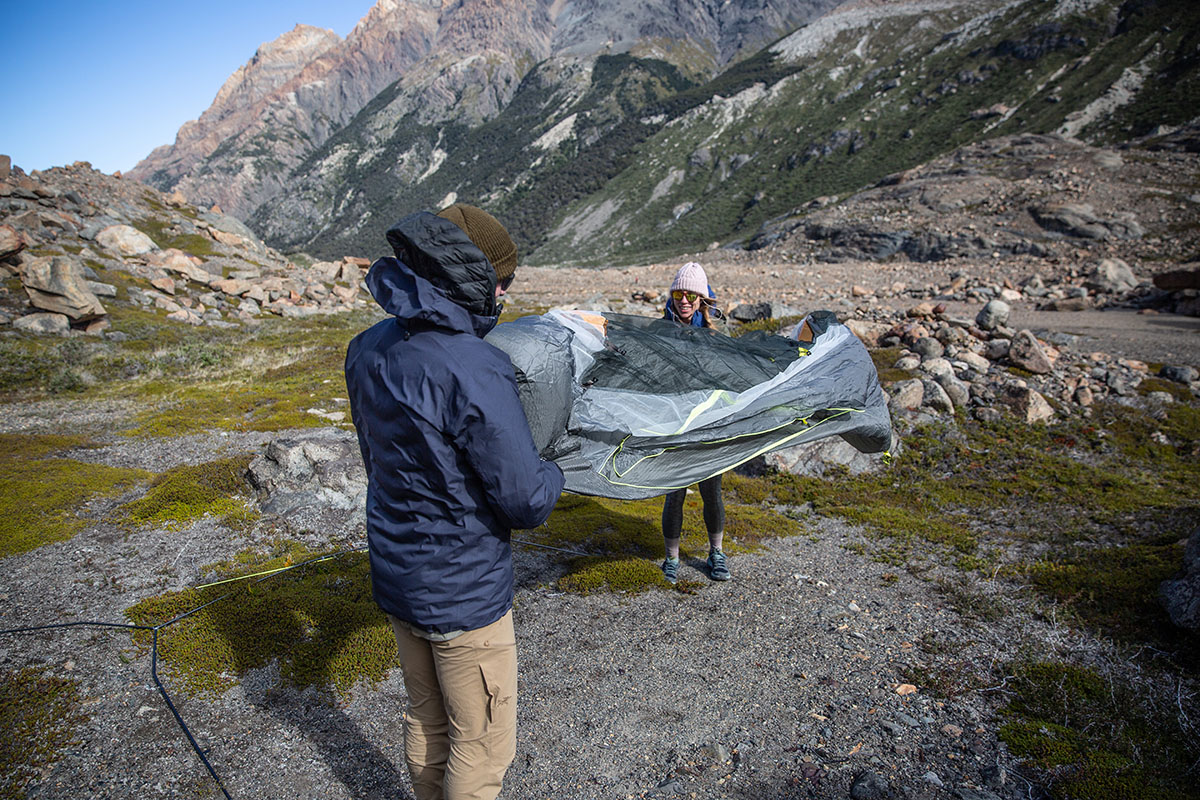
The Big Agnes Fly Creek HV UL2 and Nemo’s own Hornet Osmo are a couple of popular two-person designs that undercut the Dagger Osmo by nearly two pounds and save you a significant $130 and $100, respectively. But as expected when trimming that much weight, these tents compromise significantly in durability as well as interior and vestibule space. In the case of the Fly Creek, you also only get one door and vestibule, which makes it much harder for two backpackers to move around and organize gear. Thru-hikers, solo backpackers, or those that love a brag-worthy tent weight will be very happy with the Fly Creek and Hornet—or even a superlight option like the Zpacks Duplex Flex—but the Dagger Osmo offers far fewer compromises and better balances its priorities.
A final challenger to the Dagger is the Big Agnes Copper Spur HV UL2, which currently sits at the very top of our tent rankings. Throughout testing, we found that the high-volume pole design delivers on its promises of excellent livability with an open interior and nearly vertical walls. The two-door-and-two-vestibule build is similar to the Dagger Osmo, although again, the Nemo offers better overall interior space and vestibule square footage. The biggest penalty is weight: The Dagger checks in a full pound heavier than the Big Agnes, although the materials feel noticeably more hardwearing and confidence-inspiring. A decision between the two likely will come back to the tradeoff between weight and space, but both are excellent two-person options.
If you’re thinking about buying gear that we’ve reviewed on Switchback Travel, you can help support us in the process. Just click on any of the seller links above, and if you make a purchase, we receive a small percentage of the transaction. The cost of the product is the same to you but this helps us continue to test and write about outdoor gear. Thanks and we appreciate your support!
Depending on the seller, most products ship free in the United States on orders of $50 or more. International shipping availability and rates vary by seller. The pricing information on this page is updated hourly but we are not responsible for inaccuracies.